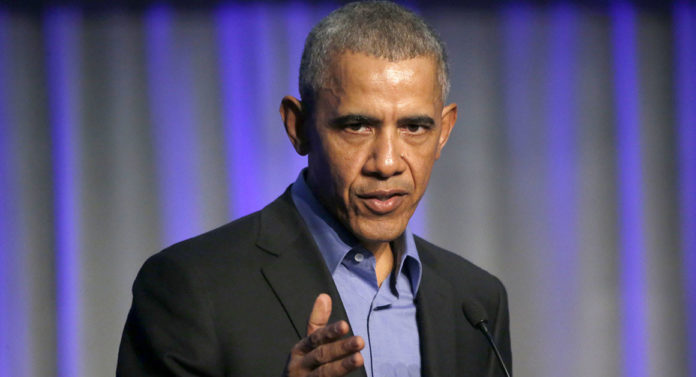Americans need to make up their minds and decide if they want to take charge of their destinies or continue to be propagandized by a government dedicated to gaining compliance with the globalist agenda. Most people go on with their daily lives, giving no thought to the reality that their attitudes and opinions towards the carefully constructed messages the media bombards them with, are constantly under the microscope. Decades of studies into human behavior have been conducted with the primary aim of determining how to bypass resistance to ideas and actions that would otherwise be rejected (Meerloo, p. 67). This is mainly done through persuasive messaging, where, according to the book The Dynamics of Persuasion, (p. 469) the psychology of a person’s response to a request for compliance is examined with the aim of overcoming their barriers to such requests. To put this in simpler terms, the government has an agenda they know the public will reject. The study of persuasion enables social engineers to gauge and manipulate public thought to push opinions and attitudes toward the desired end. According to the book Advances in Cognitive Behavioral Research and Therapy, (p. 216) persuasion, also referred to as social influence, is more than merely educating a person on the importance of taking a certain action, but convincing them of the importance of willingly adopting it. This is a hard reality for Americans to face because people tend to believe we are deep thinkers, and that our choices are motivated by our own efforts and experiences. As I will attempt to demonstrate in this article, this isn’t always the case. People’s attitudes and opinions are more often than not, the outcome of deliberately manipulated messages meant to guide and shape public perception.
One of the primary means of studying attitude change is called the Elaboration Likelihood Model of Persuasion. This is indeed a confusing topic, but it can be simplified by saying that people’s abilities to “elaborate” on the information contained within a certain message, and their likelihood of adopting this information as requested, is the primary area of study within the context of this model. From the perspective of the researchers, a high elaboration likelihood indicates that a person has the cognitive ability to think deeply about the message, relate it to past experiences and other relevant information, and apply it towards adopting the recommended action within the communication. This is called taking the central route to persuasion. Because elaboration likelihood or the ability to engage in issue-relevant thinking is high, it may be necessary to tweak the message. Research has shown that people falling in this category may have long-lasting attitude changes if they deem the information contained within the communicated issue to be of significant merit and if it falls within their pre-existing beliefs and biases. For example, during the height of the so-called, Covid-19 pandemic, millions of seemingly highly educated people adopted mask-wearing and rushed out to get an untested vaccine because they believed themselves to be deep thinkers. They evaluated the information being presented to them through the media, and because they consider the media credible, they took it at face value. According to the book Media Effects: Advances in Theory and Research, (p.167) the media plays an important role in determining what political issues appear more important than others. Therefore, people falling into a high elaboration likelihood category are likely to be influenced by media stories that are presented as important in relation to their own beliefs and attitudes. The role of the media then is to guide and influence public opinion by understanding the preexisting attitudes and opinions of the audience. According to the book Political Persuasion and Attitude Change, (p.22) highly educated people are more likely to expose themselves to mass communication sources such as mainstream news, and more likely to receive the communicated message, because they believe the media to be credible, and because keeping up with daily events is a reinforcer of their beliefs that they are exercising intelligence. Long-lasting behavioral modifications can be achieved this way because of the pride people take in their self-perceived ability to process the information they deem to be relevant. Having a high elaboration likelihood then means that attitude change can be achieved by manipulating these self-perceptions of being deep thinkers.
The peripheral route of persuasion works a little differently. This process suggests that people who fall in the low elaboration likelihood can be persuaded by simple “cues to action” because they do not take the time to actively research anything on their own, or, because the issue simply isn’t of interest to them. Being in the low elaboration category doesn’t necessarily equate with being unintelligent. Going back to Covid-19, people falling in the low elaboration likelihood may have adopted the recommended interventions simply because they saw the poster at work that said “two weeks to slow the curve.” Persuasion occurs not because of their ability to think deeply about the issue at hand, but because the stimulus prompted a reaction that induced compliance. Going back to The Dynamics of Persuasion (p.394), Perloff discusses fear appeals. He states that devising a message that motivates attitude change due to a perceived threat requires an intricate understanding of human behavior. Fear appeals involve creating perceptions of susceptibility to the threat. Some people who adopted the Covid interventions did so simply because there was a perceived threat to their health. The difference between low and high elaboration likelihood rests in the interests and motivations of the individuals in question, and the abilities of those seeking attitude change to present the messages effectively. Here is where it gets interesting. The authors of Media Effects: Advances in Theory and Research (p.168) state that the peripheral route of persuasion is effective because it is impossible for all people to effectively process all of the media messages they are exposed to on a daily basis. Think about that in the context of the 24-hour-a-day media that is constantly throwing information at us. Americans of all political affiliations must consider the real possibility that the media is there to not only propagandize us but to overwhelm us with contradictory information so that they can see which message is effectively leading to long-lasting attitude change.
To summarize the peripheral and central routes of persuasion in the context of media messaging, this is what they know. One, people who consider themselves highly intelligent are more likely to follow the news and receive or adopt the message being pushed. Covid-19, for example, not only provided a means for researchers to test this, but it also solidified this knowledge, as most people kept themselves tuned into the news while falling for the propaganda because they believed their actions were driven by their own cognitive processes. As I noted in my last article, government agencies such as the CDC, and publications like The New England Journal of Medicine, were releasing information to the public that contradicted the media narrative. Most of this information was ignored, or not even sought out, in favor of the media narrative which was convincing people to wear masks and get vaccines. Two, they know that overstimulation is a way to achieve persuasion because some people are simply unable to keep up with all of the messaging being directed at them. It is important to remember that in the context of Covid-19, millions of Americans acquiesced to getting the vaccine because they were forced to choose between getting the shot or losing their jobs.
The Elaboration Likelihood Model of Persuasion is a research model that enables researchers to manipulate opinions and attitudes by first, manipulating and controlling the stimulus involved. It does exactly what Meerloo stated in Rape of The Mind, and Bernays in his book, Propaganda (p.19). It evaluates the most effective way to persuade people into accepting things they may not have otherwise. What does any of this have to do with anything? Americans must come to realize that this type of research is going on all the time, in many ways people would never suspect because the media does its job by creating and controlling public perceptions. For example, a study in the American Political Science Review used the ELM to gauge people’s reactions to a minimum wage proposal at the beginning of Donald Trump’s presidency. This study was conducted to gauge party loyalty to Trump, and as such, the researchers admitted that to test their hypothesis they needed to view reactions from both conservative and liberal perspectives. Meaning, Trump’s endorsement of the policy was manipulated to reflect either the liberal or conservative opinion. They refer to this as Trump giving either a liberal or conservative cue towards the proposal. The wording of the survey would indicate whether Trump supported or opposed the policy. In some cases, they removed Trump’s name and replaced it with “Congressional Republicans.” The results of this survey are astonishing, and it is my belief they would apply the same way had they done it with a Democrat president. The results showed that conservative republicans were most likely to go along with Trump’s proposal simply because it was coming from Trump. In other words, those considering themselves strong conservatives endorsed the Trump position whether it was framed from a liberal or conservative view. This is interesting because, in an article entitled Shifting Liberal and Conservative Attitudes Using Moral Foundations Theory, researchers have found that in general, conservatives are more likely to shift their opinions to the left than vice versa if the issue is framed from a conservative viewpoint. This is called the persuasion hypothesis. In other words, researchers looking to shift conservative opinions to the left know two things. One, conservatives have shown party loyalty towards issues even if they are presented from a liberal perspective. Two, if they can present a liberal issue from the perspective of conservative morality, they are likely to induce an attitude change toward that issue.
People may still be asking why any of this information matters. After the Parkland Florida school shooting Donald Trump sat in the White House, next to Diane Feinstein no less, and publicly endorsed red-flag laws by saying he preferred to “take the guns first and go for due process later.” He also berated congressional Republicans for being afraid of the NRA. Finally, Trump’s bump stock ban enabled the ATF to redefine the legal definition of the word “machine gun” in the existing gun control laws. Setting aside partisan politics for a moment, and what Donald Trump does or doesn’t support, look at this information in relation to the information in the previous paragraph. They were deliberately manipulating Donald Trump’s stance on the gun rights issue to see how far they could push the right into accepting some gun control measures. Many Republicans accepted Trump’s bump stock ban without considering the larger ramifications, such as the ATF declaring the bump stock to be a machine gun. It is true that the Supreme Court may eventually overturn this, however, so far they have not. Many Republicans also show support for red-flag laws without looking into the consequences of denying someone their due process rights before confiscating their property and depriving them of their liberty. People that questioned Trump in these instances were labeled as never-Trumpers. Something that researchers surely took note of. The bigger point that I am making here is that anytime the media makes a big issue out of something you can bet your bottom dollar they are gauging the public’s attitudes and perceptions towards that issue so they can learn how to shift those attitudes to the left.
America, this is the nature of the propaganda being used against you. A relentless study of the attitudes, opinions, and beliefs of the people with the intent of understanding their motivations and how to overcome their barriers to issues they may not want to go along with. To get them to accept change they may otherwise reject. What is the solution? You can’t even begin to come up with a solution without understanding the problem. This issue in and of itself is surrounded by problems that make it impossible to come up with solutions. America’s high illiteracy rate is one example. People’s trust in media is another. Joost Meerloo said in Rape of the Mind (p. 36), that people can build a defense against propaganda and mind control if they would study the methods being used against them. The first thing that must be understood is that everything we do, our responses to media, our support for political candidates, and the things we like on Facebook, are all under the microscope. They take this information, and what they know about our behavior, and manipulate the narrative to induce compliance with their agenda. How can you possibly come up with a solution if you don’t first, understand that this is the reality we are dealing with?
Check out my latest book on Critical Race Theory Now available in paperback.

Also, check out Without a Shot Indeed: Inducing Compliance to Tyranny Through Conditioning and Persuasion.


























